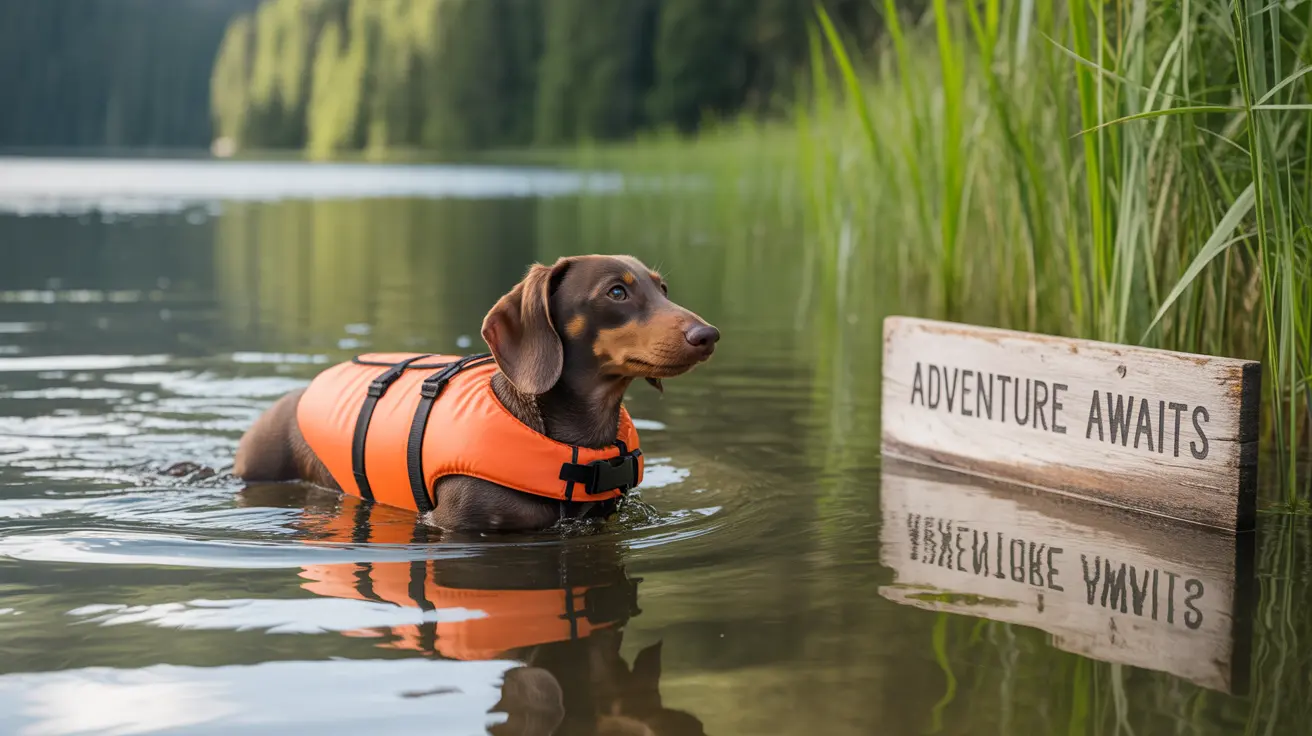Physical Characteristics and Swimming Challenges
Dachshunds' distinctive body shape presents several challenges when it comes to swimming. Their elongated torso and short legs create an imbalanced swimming position, making it difficult to stay afloat efficiently. This unique build often leads to quick fatigue in the water.
Additionally, their low-hanging bellies make them particularly susceptible to getting cold in water, which can lead to discomfort and reluctance to swim. Many Dachshunds experience what's known as "Wet Belly Syndrome," causing them to avoid wet surfaces altogether.
Safety Measures for Swimming Dachshunds
If you plan to introduce your Dachshund to water activities, several safety measures are essential:
- Always use a properly fitted dog life jacket
- Never leave your Dachshund unsupervised near water
- Choose shallow, calm water for initial swimming experiences
- Keep swimming sessions short to prevent exhaustion
- Ensure easy exit points are available and visible
Teaching Your Dachshund to Swim
Introducing your Dachshund to water requires patience and positive reinforcement. Start with these steps:
- Begin in very shallow water where they can touch the bottom
- Use treats and encouraging words to build positive associations
- Gradually progress to slightly deeper water while supporting their body
- Always respect their comfort level and never force them into the water
Health Benefits and Considerations
Despite the challenges, swimming can offer several benefits for Dachshunds when done safely:
- Low-impact exercise that's gentle on their spine
- Helps maintain healthy weight and muscle tone
- Can provide relief for joint issues
- Offers mental stimulation and enrichment
However, it's important to monitor your dog for signs of fatigue and ensure proper post-swim care, including thorough drying and ear cleaning.
Frequently Asked Questions
Can dachshunds swim naturally, or do they need special training to enjoy water?
While Dachshunds can swim instinctively to survive, most need special training to become comfortable and efficient swimmers. Their body structure makes natural swimming more challenging, requiring patient training and positive reinforcement.
What safety precautions should I take when letting my dachshund swim in a pool or lake?
Essential safety measures include using a well-fitted life jacket, ensuring supervision at all times, providing easy exit points, and keeping swimming sessions short. Also, check water temperature and conditions before allowing your Dachshund to swim.
How can I teach my dachshund to swim without causing them stress or fear?
Start with gradual exposure in very shallow water, use positive reinforcement with treats and praise, and never force them into the water. Let them set the pace and build confidence slowly over multiple sessions.
Are life jackets necessary for dachshunds when they swim, and how do they help?
Yes, life jackets are essential for Dachshunds. They provide buoyancy support, help maintain proper swimming position, and prevent fatigue. They also offer handles for quick rescue if needed.
What health risks should I watch for after my dachshund goes swimming?
Monitor for ear infections, skin irritations, and signs of water intoxication. Thoroughly dry your dog after swimming, paying special attention to ears and skin folds. Watch for excessive drinking during swimming sessions.
Conclusion
While Dachshunds can swim, their unique body structure requires special consideration and safety measures. With proper training, equipment, and supervision, many Dachshunds can learn to enjoy water activities safely. Always prioritize your pet's comfort and safety, and never force them into situations that cause stress or anxiety.






